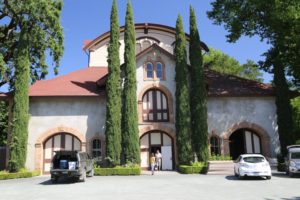

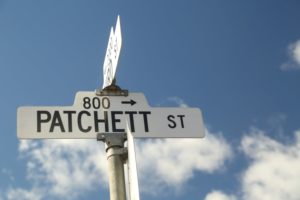 Charles Krug Winery. Our first ever visit to Charles Krug in 2009 was very special because we had been looking forward to a tasting here for quite some time ever since starting The Napa Wine Project in 2006. This is Napa Valley’s oldest winery still in existence and that deserves special recognition (although the original winery building is long gone). This was the 300th Napa Valley based winery that we visited. At the time this meant we were not even 30% of the way through visiting all Napa Valley based wineries and producers (to date, we have since visited, tasted with and written extensively about more than 1,100 Napa Valley based wineries and brands).
Charles Krug Winery. Our first ever visit to Charles Krug in 2009 was very special because we had been looking forward to a tasting here for quite some time ever since starting The Napa Wine Project in 2006. This is Napa Valley’s oldest winery still in existence and that deserves special recognition (although the original winery building is long gone). This was the 300th Napa Valley based winery that we visited. At the time this meant we were not even 30% of the way through visiting all Napa Valley based wineries and producers (to date, we have since visited, tasted with and written extensively about more than 1,100 Napa Valley based wineries and brands).
During its long and storied history, the winery has only had three owners, founder and namesake, Charles Krug & his wife Carolina, James Moffitt and the Mondavi family. While Charles Krug is the oldest winery in the Napa Valley – this must be clarified. Patchett’s Grove Winery, founded by John Moyer Patchett was the first ever commercial winery in Napa Valley (1857); in 1860 his vineyard was 55 acres, the largest in Napa County. Patchett did not produce wine for many years as his health started to fail him; we haven’t yet found an exact final vintage date but have found references to stopping production sometime by the mid 1860s. He died of cancer in 1876. In 1878 his winery was hit by lightning and completely destroyed.
It is interesting to note that Patchett had been making noncommercial wine in the 1850s for several years prior to his first commercial release. Patchett built a small adobe winery, Napa’s first commercial winery which he replaced a year later by Napa’s first stone winery.
Charles Krug made wine in the region in neighboring Sonoma County as early as 1856/1857 (but was not sold commercially). As an important piece of viticulture history – Charles Krug was Napa Valley’s first hired winemaker and made Napa Valley’s first commercial wine. He also introduced the cider press to the valley as a more efficient way of winemaking.
He was hired by Patchett in 1858 and produced a vintage later that year. According to the Napa County Historical Society, Patchett made the first commercial wine in Napa Valley in 1857, 6 barrels. Krug also produced wine in 1859 for Louis Bruck (later the uncle to Charles and Carolina’s children) who owned a ranch between St. Helena and Calistoga. In 1860 it is noteworthy to mention that Krug also produced wine for George Yount at his property near present day Yountville.
St. Helena located David Fulton Winery was built in 1861 following Charles Krug. The original Schramsberg winery dates from 1862. Suffice to say, there are very few wineries in Napa Valley that were founded in the 1860s. Others with physical wineries built in the 1860s included Crane, Pellet, Brannan, Woodward and Sigrist.
While Charles Krug was the second commercial wine making venture in all of the Napa Valley – the first winemaking happened sometime in the 1840s. Records show that George Yount (Yountville’s namesake who first visited the Napa Valley in 1831) moved onto his nearly 12,000 acres of land (ranging from just south of St. Helena to south of present day Yountville – the Caymus Rancho land grant) in 1838 and planted the first ever grapevines in Napa Valley in 1838/1839 not far from the tiny village called Sebastopol at the time (later changed to Yountville). This site is currently the vineyard location of Ghost Block owned by the Hoxey family.
While no records remain that show the date of Yount’s first noncommercial winemaking – perhaps it was in the early 1840s after his vineyard had matured. Records do show that he made some noncommercial wine by the late 1840s. This would have been the first ever wine produced in the Napa Valley.
The descriptions below of Charles Krug’s life before coming to the Napa Valley were referenced from Charles Krug’s obituary published in a variety of newspapers in November 1892 (we have found very few other references to his early life other than the obituary). Charles Krug was born in 1825 in what was Prussia, came to the United States for the first time in 1847 and taught school in Philadelphia for less than a year. Staying current with events back in Europe – he left the United States, settling in Frankfurt and began to play a role in the German revolutions of 1848–1849 – which were rooted in the French Revolution of 1848. Krug began writing revolutionary articles prior to actually participating in the attempt to overthrow parliament. The attempt failed, and he was jailed for nine months. Another later revolution freed him from prison. He returned to Philadelphia in 1851.
The reason he initially came to California was to take a job as the founding editor of the weekly Staats Zeitung (in English, State Newspaper) based in San Francisco – the first German paper in circulation on the west coast of the United States. This newspaper was active from 1852 through 1918. After his work as editor, he took a job as a gold refiner at the San Francisco Mint.
Krug’s first land purchase was in neighboring Sonoma County in 1853 from Agoston Haraszthy who he already knew from when both men were working at the San Francisco Mint. Agoston was founder of Buena Vista Winery, one of California’s oldest wineries. Krug planted several varieties on his 25 acres of land that he called Monte Bello. Records show that he sold this property in 1860 to move to Napa Valley and start Charles Krug Winery. We have not yet been able to determine the exact location of his Monte Bello Vineyard (we asked Peter Mondavi Sr years ago, and he also wasn’t sure of the location) although most likely it was on the outskirts of the town of Sonoma near Buena Vista Winery. Perhaps noted local historian George Weber would have a better idea of its location.
From historical records, Charles Krug planted his first grapes in St. Helena in 1861 – two years after the first ever vineyard was planted in this town by George Belden Crane. These first Krug grapes planted were the Mission variety – by 1875 he would abandon growing Mission grapes due to their inferior quality.
Krug’s first winery building was also completed in 1861 and was a fairly small crude cellar with a thatched roof. We have seen references that his first vintage was made using grapes from Knights Valley. A major fire destroyed this first structure in 1874 due to a wooden cask exploding while it was being sulphured inside and by 1875 Krug had built a larger and sturdier 320,000+ gallon storage capacity winery. Jacob Beringer (later founder of Beringer Brothers Winery) fought valiantly to try and save the building. A St. Helena Star article from July 2, 1880, indicates even more additions and improvements were made to the cellar and his own home this year – and the year prior a new hydraulic press was installed. Production records from the 1870s and 1880s show that Charles Krug Winery was among the largest producers in all of the Napa Valley.
Charles Krug, St. Helena Cemetery
John Patchett, Tulocay Cemetery Napa
George Yount, Yountville Cemetery
Also of historical significance, Charles Krug married Carolina Bale, 17 years his junior the day after Christmas in 1860, months before founding Charles Krug Winery. Carolina only lived until age 49 and according to a Napa Valley Register article from November 6, 1879 – she eventually had bouts of insanity and at one point had to be committed to an insane asylum (today known as a Psychiatric hospital). Carolina was the daughter of Edward Bale (a man who claimed to be a physician) and General Mariano Vallejo’s niece Maria Ignacia Soberanes.
At the middle age of 30 Bale was given the Rancho Carne Humana land grant – a nearly 18,000-acre parcel of land. This was roughly the entire valley between present day Tubbs Lane just north of Calistoga all the way down to Galleron Lane in Rutherford (today with no traffic about a 20-minute drive); records show that this was the 6th land grant given out by General Vallejo – the first being to George Yount (eventually 15 land grants in the Napa Valley would be issued prior to California statehood in 1850). Bale’s homestead, built in the early 1840s was anchored by a two-story adobe home on the west end of what is now Whitehall Lane (south of St. Helena). A grist mill was also on site. The adobe structure stood until 1931 when it was destroyed by a farmer. Bale owned one of the early vineyards in the Napa Valley – having planted Mission grapes on his property in the 1840s.
In 1844 Bale accused General Vallejo’s brother of unwanted advances towards his wife and decided to violently take matters into his own hands. He found Vallejo’s brother in the town of Sonoma and fired off two shots at him but did not kill him. Bale was locked up and would have been lynched but was saved by a release order given by then Governor Manuel Micheltorena in Monterey, California. Bale eventually got gold fever, heading to the California gold fields and got the real fever – becoming ill he died in 1849 at 38 years of age.After the marriage, the Krug’s inherited through a dowry 540 acres of land which included the Bale Grist Mill (built in 1846). Part of this land gift also included property on what is lower Spring Mountain in part currently occupied by Fantesca Estate. The old mill is still standing (although it’s been restored since its initial construction) and is now part of the Bale Grist Mill State Historic Park. This was also the site for some of those participating in the Bear Flag Revolt of 1846 to gather at the new mill – before riding their horses all the way into the Sonoma Plaza. Open on the weekends for milling demonstrations, it is only a 5-minute drive from Charles Krug Winery.
As a result of the land acquired through his wife’s dowry, Krug’s land holdings in the Napa Valley were not only valley floor centered around his physical winery but were also on the hillsides. Some of Krug’s hillside plantings occurred in the 1860s on the lower slopes of what is now the Spring Mountain District (among the early hillside plantings in all of the Napa Valley). A March 7, 1879, St. Helena Star article references his vineyard in the hills within the city limits of St. Helena behind Beringer Brothers was planted in 1873. And by 1880 Charles Krug was developing a 100-acre vineyard near Angwin below what is now the Howell Mountain sub appellation.Speaking of the nearby Beringer Brothers, Jacob Beringer arrived in St. Helena in 1870 and took a job as cellar superintendent at Charles Krug – he worked at Krug until 1878 until he left to pursue building the very young at the time, Beringer Brothers Winery with his brother Frederick.
Charles Krug was actively involved in both the local and state viticultural communities; he founded the Napa and Sonoma Wine Company with a focus on shipping wines to the east coast and in 1875 was one of the founding members of the St. Helena Vinicultural Club (in 1880 the name was changed to the St. Helena Vinicultural Association – and note its spelling). Before the group started formally meeting once a month, Krug met with other notable vintners or vineyard owners including Henry Pellet and Seneca Ewer approaching them about the idea of starting an organization to help promote wines from vintners located in St. Helena. At one point Krug served as their president. Today this is organization is known as Appellation St. Helena. Krug also served the state of California as a member representing Napa, Solano and Contra Costa counties on the Board of State Viticultural Commission. And he traveled promoting his own wines while simultaneously representing the Napa Valley.
The final years of Krug’s ownership were difficult – his business was failing, so was his health and Carolina had died a year before his own death in 1892. Before he died, he leased a sizable portion of his cellar to William B Bourne (reference Greystone Cellars history and Chase Family Cellars). His funeral was a large event (one account listed as many as 300 horse-drawn carriages in the procession – remember this was before the automobile) with many fellow vintners in attendance including contemporaries such as Beringer, Ewer and Pellet.
The Moffitt Ownership/Transition
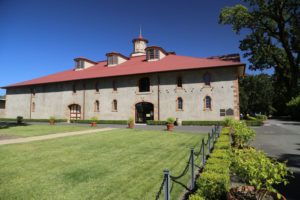
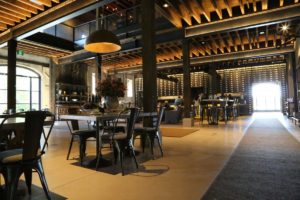
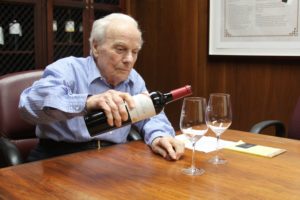 In 1894, two years after Charles Krug died the winery was purchased by a family business acquaintance James Kennedy Moffitt. Moffitt was involved in numerous business pursuits including his family’s own company Blake, Moffitt & Towne (a paper manufacturing company in San Francisco), the banking industry, in the mid 1930s was President of the peninsula-based Bear Gulch Water Company and at one point was the chairman of the executive committee for Crocker First National Bank in San Francisco.
In 1894, two years after Charles Krug died the winery was purchased by a family business acquaintance James Kennedy Moffitt. Moffitt was involved in numerous business pursuits including his family’s own company Blake, Moffitt & Towne (a paper manufacturing company in San Francisco), the banking industry, in the mid 1930s was President of the peninsula-based Bear Gulch Water Company and at one point was the chairman of the executive committee for Crocker First National Bank in San Francisco.
This is an excerpt of our interview with Peter Mondavi Sr. about the transition in ownership:
“The Krug property I don’t really recall was publicized for sale – but my father found it through banker Paul Alexander. The rumor was this place was really for sale. My father was very well acquainted with the banker/owner, James Moffitt, so Mr. Moffitt arranged a meeting at Crocker First National Bank in San Francisco (Editor’s note: this building completed in 1908 was at 1 Montgomery Street – the first two floors still are standing as the rest of the upper floors were demolished in the 1980s).
Mr. Moffitt owned the property as a summer home. So anyway, we had the meeting, and I was in the service at that time. I had a leave of absence for a few days. It was me, my brother and my father. I remember my father saying, “if you two want to perpetuate the business, I’ll seriously consider the purchase of the property.” The price at that time was $75,000 for the whole property. Of course, it was all in shambles, the buildings – they never nailed the floors in. A lot of the flooring was taken out – never nailed in, only laid in.
There was no activity on the place, it was leased prior to Louis Stralla (Editor’s note: Stralla was one of the seven founding members of the Napa Vintners Association in 1944) on an annual basis (his lease ran out in 1940). It was just an open cellar with dirt floors and half of a 2nd floor and a partial 3rd floor. People would take the wood from the flooring and use it for other things. It wasn’t an operating winery, that’s for sure.
The conversation went on for 15-20 minutes talking about this and that. Mr. Moffitt got a phone call – he went out of the room to take it. My father knew the price and course Mr. Moffitt knew the price. My father showed interest because my brother and I were interested. It was understood we were definitely interested in the place. So anyway, he took that telephone call, and we heard him say, “No I just sold it”. He came back and told my father “It’s yours”, just like that, out of the blue.
Of course, it was obvious Paul Alexander was in close contact with Mr. Moffitt and told him of my dad’s reputation.”
The Mondavi Family
Moffit owned the property for some 49 years until Cesare (pronounced chez a ray) and Rosa Mondavi purchased 147 acres including the winery in 1943. At the time of their purchase the winery building was really rundown – the floor was dirt, and the upper floors were only partially still standing (over the years wood had been removed from the walls).
Their sons Robert and Peter were also involved in the winery operations. Peter Mondavi Sr., (brother of Robert Mondavi) lived and worked on site after returning from his service in World War II until his death in 2016 (our interview with him here) and his two sons Peter Jr. and Marc run the day-to-day operations. Peter Mondavi was truly the last of the “living legends” in Napa Valley.
Peter, one of four siblings was born in Minnesota; the family was originally from the small mountain town of Sassoferrato in the province of Ancona (today, population around 7,000 people). The town is known for its ancient structures including the Rotondo Castle and Albornoz Fortress. Initially they settled in a mining town of Virginia, Minnesota in 1908. Peter grew up in Lodi California where his parents Cesare and Rosa moved the family in 1922 to work in grape shipping and distribution. At one point prior to owning Charles Krug, Cesare was the president of the large Acampo Winery in Lodi. The family business continued to grow – even more so during Prohibition when demand increased for fresh grapes (heads of households could legally make 200 gallons of home wine during Prohibition).
The family lived in at least two homes in the Lodi area, the most prominent family home is still standing – located only a few blocks from downtown Lodi. The home was built in 1917; the family moved in sometime in the mid 1920s. Dated today, the interior feels like walking back in time. The original wallpaper that Rosa chose still lines the walls, the original radiator still works, and the front room is still in its same location (albeit with different décor) where Cesare conducted his wine business. And it was within these walls that in 1943 Robert first broached the idea of purchasing Charles Krug Winery to his father.
Sassoferrato, Italy
Peter Mondavi Childhood House, Lodi, CA
Cesare was a partner in Sunny St. Helena Winery in the Napa Valley in 1937 (now Merryvale Vineyards). The Mondavi family purchased Charles Krug Winery in 1943 and produced their first vintage in 1944. From a master list we have spent significant time curating of wineries producing continuously since at least 1979 or before, only the following 5 Napa Valley based wineries have produced a vintage continuously prior to Charles Krug: Louis Martini (1933), Inglenook (1933, founded 1879 – we are counting Rubicon Estate here, as in the 1980s, as a standalone brand Inglenook did not produce wine for at least one vintage), Nichelini (1890), Beaulieu Vineyard (1904, founded 1900) and Beringer (1876).
Expanding as they grew production and sales the Mondavi’s recognized the need to own their own vineyards – in 1962 they purchased 550 acres in Oakville from a vineyard that they were already familiar with since they had been purchasing fruit from it for a number of years. This vineyard formed the majority of the historical footprint of To Kalon Vineyard. Eventually Robert Mondavi took ownership of the Charles Krug portion of this vineyard.
In 1966 during the buildup to Ronald Reagan’s run for his first term as governor of California, he visited Napa Valley twice that year including in the city of Napa in May at his local campaign headquarters office and then on September 13, 1966, where he stopped and spoke to about 700 people at Charles Krug Winery (admission was free). Peter Mondavi personally gifted him some of the Charles Krug wines while Reagan was on stage. This was the second such gift of Krug wines, as was gifted a case of Krug wines when he spoke at Aetna Springs Resort the previous year.
And according to an article in The St. Helena Star dated February 24, 1972 Schlitz Beer had shown and interest in purchasing Charles Krug Winery. However, Krug’s board of directors voted 4-3 against selling the company. This article reported that well-known San Francisco Chronicle columnist and man about town Herb Caen had incorrectly reported that Schlitz Beer had made a 30 million dollar offer for the winery.
The Winery
Charles Krug has invested millions of dollars over the years into their vineyards including replanting at times – from a winery perspective that is the first and smartest investment a winery can make – as producing high quality wine begins and ends with its vineyards. Many of their vineyards are now organically farmed. With 850 acres under family ownership in the Napa Valley, they are one of the largest family-owned vineyard landholders in the region.
The winery is located about 1.5 miles north of the town of St. Helena on the east side of the highway. This is an impressive and very historical winery neighborhood. For reference, their driveway is just north of Beringer Vineyard and the impressive Culinary Institute of America (old Greystone Cellars). Drive down a long olive tree lined driveway and park in one of several small open-air parking spaces within a short walk of the tasting room.
As you arrive on the property, note the rose bushes planted in front of the vineyard rows. Historically these were planted here because they are an indicator species often showing signs of powdery mildew (a fungal disease) before the vines do – letting vineyard workers know it was time to spray the vines with sulfur. Today vineyard managers have other ways of knowing when to spray sulfur. And of course, the roses add a nice visual element to a vineyard.
The wineries’ massive historical stone building and carriage house underwent a major structural & visible renovation (finished in 2013). The company in charge of this project also restored and retrofitted the nearby historical Greystone building, now serving as home to the Culinary Institute of America. Along with this renovation they brought the winery up to modern standards and in effect built “two wineries” for their production of both the Charles Krug wines / Peter Mondavi Family wines as well as their much larger production, CK Mondavi.
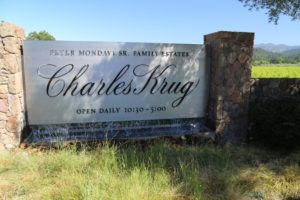
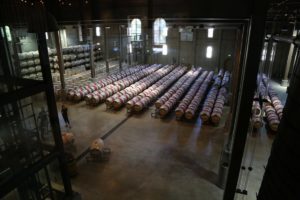
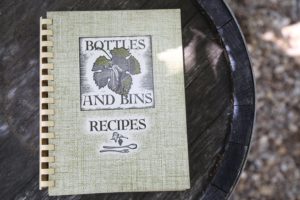 Their original tasting room dated from 1882 and was the first tasting room open in the Napa Valley – pre-dating Inglenook’s ‘sample’ room by 7 years. Tastings were conducted since the 1950’s in a building we commonly referred to as “the trailer” until the “Redwood Cellar”, the old stone winery opened to the public on November 18, 2013. This tasting room was designed by Howard Backen (died 2024) – one of the wine country’s premier architects (the Hamden McIntyre of his generation). His firm has designed a number of premium wineries in the valley including Harlan Estate and another Mondavi family-owned winery, Continuum on Pritchard Hill. Redwood from their old tanks (dating to the 1940’s) was in part used during the renovation). Their tasting bar and hospitality center overlooks the Family Reserve Barrel Room – which ages their premium wines. An old redwood tank long since passed its use – still stands in this cellar room – a tribute to how wines were made here years ago.
Their original tasting room dated from 1882 and was the first tasting room open in the Napa Valley – pre-dating Inglenook’s ‘sample’ room by 7 years. Tastings were conducted since the 1950’s in a building we commonly referred to as “the trailer” until the “Redwood Cellar”, the old stone winery opened to the public on November 18, 2013. This tasting room was designed by Howard Backen (died 2024) – one of the wine country’s premier architects (the Hamden McIntyre of his generation). His firm has designed a number of premium wineries in the valley including Harlan Estate and another Mondavi family-owned winery, Continuum on Pritchard Hill. Redwood from their old tanks (dating to the 1940’s) was in part used during the renovation). Their tasting bar and hospitality center overlooks the Family Reserve Barrel Room – which ages their premium wines. An old redwood tank long since passed its use – still stands in this cellar room – a tribute to how wines were made here years ago.
With a kitchen on the first floor, both food and wine pairings are offered. In a nod to family history, it is called the Cucina di Rosa trattoria (Rosa was the original matriarch of the Mondavi Family). The Trattoria is open daily – guests can purchase food items here and take them outside and enjoy on picnic tables on the lawn behind the tasting room. A pizza oven operates seasonally next to the picnic tables – recommended: buy a bottle of wine and enjoy it with a fresh baked delicious thin-crust pizza. All those bottles behind the tasting bar show labels displaying one date on each bottle – 1861 a nice tribute to the year Charles Krug opened.
Krug offers an excellent variety of wines for guests to the property. Visitors who enter the tasting room are greeted by a concierge and a welcome wine. The staff is friendly and helpful. Choose from several tasting flights – the Napa Valley (some whites and reds), Sparkling Wine and their Limited Release and Family Reserve (primarily reds). We highly recommend choosing these more limited production wines (since they are not available in distribution).
Select Wines
History is obviously a key component at Charles Krug; they hold back older vintages, during earlier visits we saw wines up to 20 years old for sale in the tasting room. And the private reserve room next to the great cellar contains an impressive collection of their vintage selection wines dating all the way back to 1944. One can easily see the corroding lead foils on some of the older vintages. They continue to corrode to the point where employees have to clean the countertop below these bottles every once in a while.
Charles Krug produces and bottles four different wine offerings. These include their Napa Valley Series (larger production wines produced from a variety of vineyard sites in the Napa Valley), Limited Release wines (single vineyard wines only available for tasting and purchase at the winery), Generations Family Reserve (a Bordeaux styled red blend) and their Vintage Selection Cabernet Sauvignon (their flagship wine from this variety, only produced during exceptional years).
Whites
The 2022 Charles Krug Sauvignon Blanc, Napa Valley; this wine is medium straw in color. The bouquet immediately smells like spring florals, including citrus blossom and jasmine. There are also notes of golden delicious apple, ripe pear and pineapple guava. This is a highly enjoyable wine to smell. The palate offers flavors of guava, ruby red grapefruit, pomelo, kiwi, lime, apple, white peaches and honeydew melon. The flavors are on the herbal side of the spectrum, but are in no way green or grassy. The finish lingers with a tarragon or dill type subtle sweetness.
Resurrecting a sparkling wine after many years in 2020, Charles Krug produced a non-vintage Carolina Bale Blanc de Blancs (100% varietal Chardonnay sourced from Mendocino County) made offsite at a winery in Sonoma County. Medium yellow in the glass offers floral notes including honeysuckle. Flavors of both green and red apple and kiwi show on the palate. Bright, refreshing and easy to drink. An accompanying sparkling wine is also produced – the Carolina Bale Brut Rosé.
The 2018 Charles Krug Limited Release Carneros Chardonnay is medium gold in color – offers hints of margarine (but is certainly not butter driven on the bouquet) along with citrus blossom, melon and red apple. Was aged sur lie – the results show in its texture – a roundedness across the palate. Rich with more going on than just the fruit – offers a toasted almond characteristic on the palate along with minerality notes; lingers with flavors of tangerine, hazelnut, and hints of desert spices. A noticeable liveliness of acidity and fruit persists on the finish. Very nicely done.
Reds
Merlot
The 2022 Charles Krug Merlot is from their vineyards in both St. Helena and Yountville. This wine is deep ruby in color; the attractive bouquet offers aromas of dark raspberry, Santa Rosa plum, cherry cola, mint, white chocolate, cardamom, dried sage and clove. Balanced, bright, savory and refreshing, this wine offers flavors of bramble, plum, cherry, raspberry and blueberry. The finish persists with flavors of dried herbs including sage and bay leaf, a light pepper character, tobacco and grainy tannins felt more on the front of the palate than the back. Their gravelly and drying character continues to last beyond the fruit. Very food friendly; we wouldn’t mind pairing this with a flank steak and a BBQ.
Malbec
The 2017 Charles Krug Limited Reserve Malbec was sourced from one of their Yountville properties; this wine is 97% Malbec, 2% Cabernet Sauvignon and 1% Petit Verdot. Dark ruby with purple edges on the rim in the glass. Very fruit forward with appealing ripe aromatics of blueberry and plum. Becomes a little more aromatically savory as the wine opens. Decidedly California style – not a typical more earth-driven Argentina style. Opulent across the palate with flavors of blueberry and plum. Rounded plush tannins anchor the smooth finish. Will be easily enjoyed by a variety of palates.
Generations
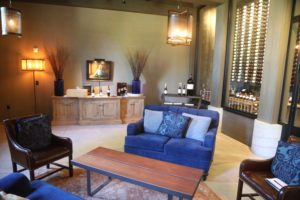
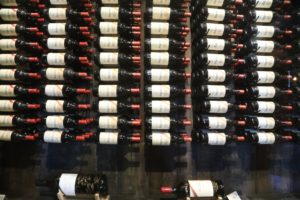
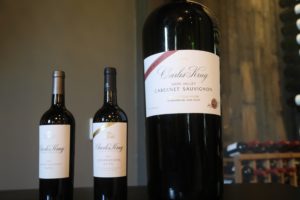 In 1991 Peter Mondavi Junior received a call for help from a friend during harvest. His friend had some additional grapes from his own premium vineyards that for whatever reason were not being used and asked Peter if he wanted these grapes, perhaps to be used in one of Charles Krug’s own wines. Peter accepted the gifted grapes and made a decision to fill up the rest of a partially empty tank which was fermenting Cabernet Sauvignon from one of their Yountville vineyards. His father, Peter Sr., was traveling in Europe at the time. When Peter Sr., returned from his trip abroad and discovered what his son had done, he was fairly furious – altering the varietal characteristics of this Cabernet Sauvignon with other red grapes in his mind at the time, was not a good thing. However, Peter Sr., kept trying this wine as it evolved and several months after harvest he put his stamp of approval on the project, simply by telling his son, “Not bad”.
In 1991 Peter Mondavi Junior received a call for help from a friend during harvest. His friend had some additional grapes from his own premium vineyards that for whatever reason were not being used and asked Peter if he wanted these grapes, perhaps to be used in one of Charles Krug’s own wines. Peter accepted the gifted grapes and made a decision to fill up the rest of a partially empty tank which was fermenting Cabernet Sauvignon from one of their Yountville vineyards. His father, Peter Sr., was traveling in Europe at the time. When Peter Sr., returned from his trip abroad and discovered what his son had done, he was fairly furious – altering the varietal characteristics of this Cabernet Sauvignon with other red grapes in his mind at the time, was not a good thing. However, Peter Sr., kept trying this wine as it evolved and several months after harvest he put his stamp of approval on the project, simply by telling his son, “Not bad”.
And when it came time to decide upon a name to bottle this wine, long time employee Alfredo Martin (since retired) who oversaw their cellar and bottling line production at the time suggested the name ‘generations’ – tying into both the multi-generational Mondavi family, and some of their employees who had generationally worked at Charles Krug – not to mention, a blend of multiple grape varieties tied in well with the name. This first vintage was co-fermented of course, varieties in the blend for later and current vintages are vinified separately and then blended together before bottling. And what would be a huge problem today but was amicably agreed upon years ago – Raymond Vineyards also produces a generations Cabernet Sauvignon. This is a rare instance of where two different wineries continue to produce both the same varietal wine using the same name.
The 2017 Charles Krug Generations Red Blend (83% Cabernet Sauvignon, 13% Petit Verdot and 4% Merlot – all harvested from estate vineyards in Yountville) is inky purple – the Petit Verdot and its rich phenolics show off well in the color of this wine); offers forward aromatics of boysenberry, blackberry and notes of chocolate. Ripe but never over ripe in its aromatic presentation. Mouthwatering, juicy across the palate – delivers an intensity of flavor without heavy structure. Lingers with both long lasting grape and wood tannins – both are well integrated into the finish. Spent 18-20 months in French oak.
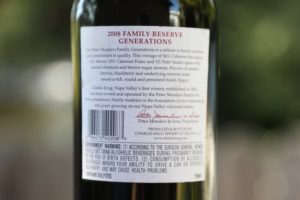 The 2008 Charles Krug Generations is a blend of 56% Cabernet Sauvignon, 31% Merlot, 10% Cabernet Franc and 3% Petit Verdot. For reference we needled and nosed this wine 18 years post vintage. It is deep ruby with some color transition into a brickish hue; the bouquet still shows plenty of fruit but has evolved from fresh aromatics into more dried fruit notes. These include dried blackberry, dark cherry, black plum, dark fig, prune, baker’s chocolate, assorted dark baking spices and other tertiary aromatics including soy sauce, old cigar box, baseball mitt leather, tobacco spice and assorted dried herbs. Lots of layering here. Savory across the palate, its flavors include dried cherries, dark raspberries, lightly bitter cocoa, soy, dried tobacco leaf, chalk and a note of dried herbs. Medium acidity. The tannins are gravelly and rounded and linger with a subtle drying character. Balanced. Drinks easily at this age, with characteristics of its bottle age showing on both the bouquet and palate. This bottle is particularly special; it was the last bottle that Peter Mondavi Sr., personally gifted us.
The 2008 Charles Krug Generations is a blend of 56% Cabernet Sauvignon, 31% Merlot, 10% Cabernet Franc and 3% Petit Verdot. For reference we needled and nosed this wine 18 years post vintage. It is deep ruby with some color transition into a brickish hue; the bouquet still shows plenty of fruit but has evolved from fresh aromatics into more dried fruit notes. These include dried blackberry, dark cherry, black plum, dark fig, prune, baker’s chocolate, assorted dark baking spices and other tertiary aromatics including soy sauce, old cigar box, baseball mitt leather, tobacco spice and assorted dried herbs. Lots of layering here. Savory across the palate, its flavors include dried cherries, dark raspberries, lightly bitter cocoa, soy, dried tobacco leaf, chalk and a note of dried herbs. Medium acidity. The tannins are gravelly and rounded and linger with a subtle drying character. Balanced. Drinks easily at this age, with characteristics of its bottle age showing on both the bouquet and palate. This bottle is particularly special; it was the last bottle that Peter Mondavi Sr., personally gifted us.
Vintage Selection
The 2016 Charles Krug Vintage Selection is 99% Cabernet Sauvignon and 1% Petit Verdot with the grapes from their Voltz and Slinsen vineyards in Yountville (both vineyards are right next to each other) and also Cold Springs on Howell Mountain. Dark ruby in color offers aromatics of blackberry and plum along with a subtle nuance of mocha – also shows a little bit savory with hints of dried herbs and old cedar box. Balanced with flavors of dark cherry and blackberry. The texture is certainly an appealing hallmark of this wine – it has density but with a round tannic structure that is dusty and almost chalk-like in feel. Very approachable while young but has all the hallmarks to cellar for years. This wine has deep historical roots at Charles Krug – it was first produced in 1944 by the Mondavi family. And this particular vintage was the first ever time that mountain grown fruit was incorporated into the wine.
And in 2022 it was announced that for the first time ever, Charles Krug Winery in conjunction with Buena Vista Winery in Sonoma made wine together with the release of this coming at Premiere Napa Valley.
—
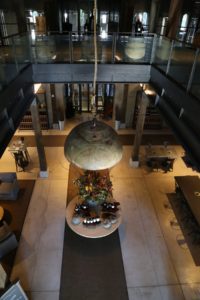
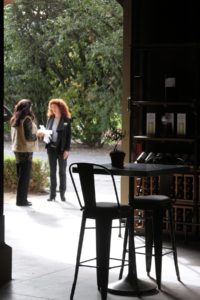 Bottles & Bins was Napa Valley’s first winery publication eventually being published 3x/year. The first issue was published and edited in 1949 by Frank Gould (a Charles Krug tour guide). This publication reached thousands of customers becoming a rather sizable publication (our personal copy from 1965 is more then 100 pages). It contained recipes, wine education and news and events of the Napa Valley. It was published for about 30 years. Today Charles Krug publishes a quarterly feature simply called ‘1861’ featuring notes from family members and updates about wines and other Charles Krug related newsworthy items.
Bottles & Bins was Napa Valley’s first winery publication eventually being published 3x/year. The first issue was published and edited in 1949 by Frank Gould (a Charles Krug tour guide). This publication reached thousands of customers becoming a rather sizable publication (our personal copy from 1965 is more then 100 pages). It contained recipes, wine education and news and events of the Napa Valley. It was published for about 30 years. Today Charles Krug publishes a quarterly feature simply called ‘1861’ featuring notes from family members and updates about wines and other Charles Krug related newsworthy items.
Incidentally, Gould was also instrumental in providing early public relations support for the Napa Valley Wine Library Association – an organization that preserves information relating to viticulture and wineries as it relates to the Napa Valley – and incidentally they host one of the best tastings (open to members) in all of Napa Valley each year in August at the Silverado Country Club.
Krug’s August and September ‘Tastings on the Lawn’ are two very popular social gatherings of wine lovers held annually since 1951 (not held in 2020). These two events are considered their “open house” and it is a great time to meet other wine-lovers, those in the industry, key Krug employees and try current release wines paired with food and cheese.
Charles Krug hosts Blue Note Napa (live jazz concerts) in the summers in front of the hospitality center. Blue Note Napa is a live music jazz club and restaurant based in the Napa Valley Opera House in the city of Napa. Musicians who have performed at Blue Note Napa at Charles Krug have included Snoop Dog, the Pacific Mambo Orchestra and Viceroy among many others.
The winery also hosts other events thorughout the year including the very popular, Heritage Fire Tour, a collection of restaurants focusing on meats.
Beginning in 2020, Charles Krug began embracing a diversity of virtually hosted events – allowing the winery to reach numerous fans of their wines along with introducing their story and wines to new customers.
Weddings
Charles Krug is one of the few wineries in the valley that can legally host weddings. Their wedding package includes the use of the historic Carriage House (built in 1881 by Charles Krug for his wife Carolina to house her horses), the Guest House and Great Lawn. The Carriage House has been beautifully restored with plenty of space on the lower floor and a grand ballroom on the upper floor.
Culinary Garden
Wondering about the (when planted) impressive 3-acre garden on the left as you drive in the driveway? The Culinary Institute of America (CIA) farms this vegetable and herb garden – conveniently located almost across from their St. Helena campus. Produce from the garden is sold to select local restaurants and the garden is also used for the CIA’s Farm to Table classes.
Train Tracks/Wine Train
Train tracks used to run all the way to Calistoga ending in approximately the location of what is now the the Cal Mart parking lot. A train station called Larkmead was located near the current location of Larkmead Winery. The Napa Wine Train uses the tracks today – with their northernmost stop on the Charles Krug property directly on the east side of the tasting room. The tracks were unfortunately and shortsightedly removed in the 1970s from Deer Park Road north – although apparently a right of way still exists, and the tracks could potentially be reinstalled.
The tracks still run behind (east) of the winery and fall into complete disarray just north of the winery – the final piece of northernmost rail from this historic track still exists on the Charles Krug property a few feet before Deer Park Road – well hidden by trees. The train station at Charles Krug Winery was first built in 1880.
CK Mondavi
This is another brand of wines owned by Peter Jr. and Marc and their families. The genesis of this brand dates all the way back to 1946; the Mondavis were suffering financial hardships at that time and decided to create a separate lower end, lower priced jug wine to help sustain their operations. The focus is still on larger production wines at a lower price point. Production is sizable and remarkably these wines are still produced on site at Charles Krug Winery.
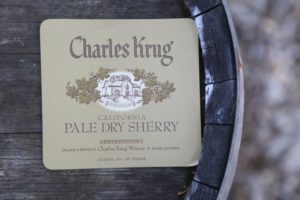 CK Mondavi owns nearly 1,900 acres in neighboring Solano County (the Dunnigan Hills appellation). In addition to grapes used from their own properties, they also work with a number of growers with exclusive contracts for grapes for the CK Mondavi wines. Both Marc and Peter’s children are involved in overseeing this company.
CK Mondavi owns nearly 1,900 acres in neighboring Solano County (the Dunnigan Hills appellation). In addition to grapes used from their own properties, they also work with a number of growers with exclusive contracts for grapes for the CK Mondavi wines. Both Marc and Peter’s children are involved in overseeing this company.
And other brands under their ownership include Flatop Hills, Fortissimo, and Purple Heart (wines created with proceeds donated to the Purple Heart Foundation – supporting military personnel and their families). For more information, visit: www.ckmondavi.com
In 2023 five of matriarch Rosa Mondavi’s great-granddaughters (Giovanna, Riana, Lia, Angelina and Alycia) launched a brand called Aviana (part of CK Mondavi). Their portfolio is focused on international vineyards with their inaugural release showcasing wines from Portugal, Spain and France.
Krug also maintains excellent national distribution with their wine shipped to all 50 states. And some of their wines are produced for the export market – labeled as Napa Vista. For more information, to schedule a visit to this historic and storied property, or to join one of their wine clubs, visit: www.charleskrug.com
Redwood Cellar
Carriage House
Cucina di Rosa
Seasonal Pizza Oven
Select Vineyards
Bale Grist Mill

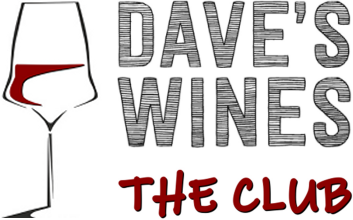




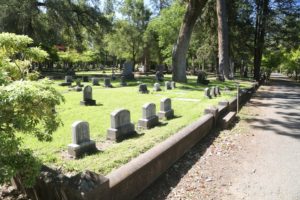


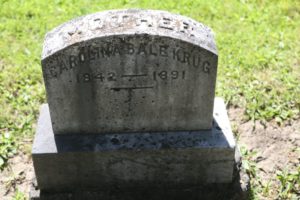
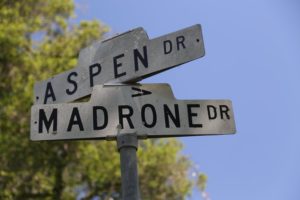
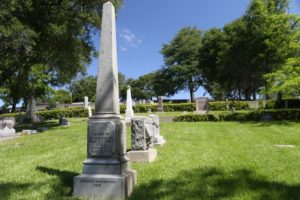
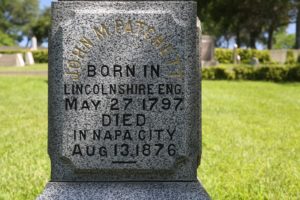
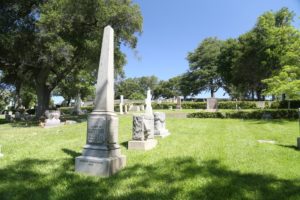
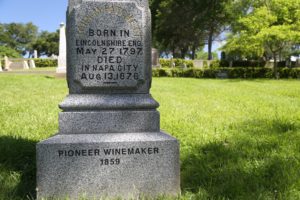
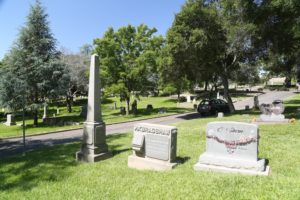
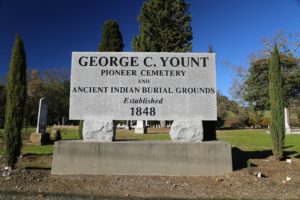
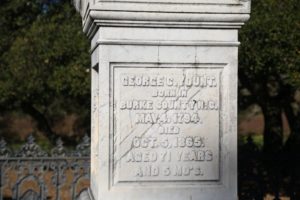
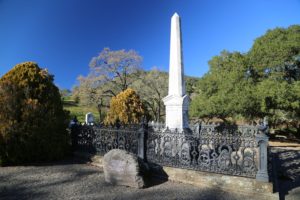
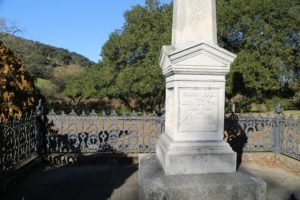
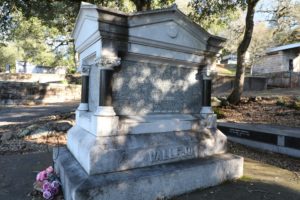
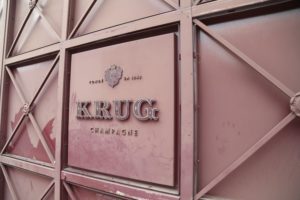
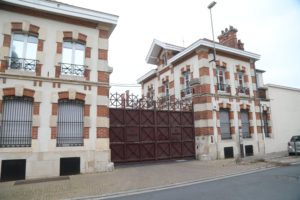
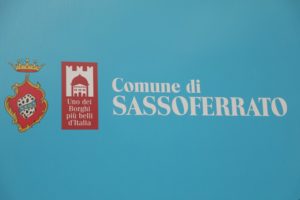
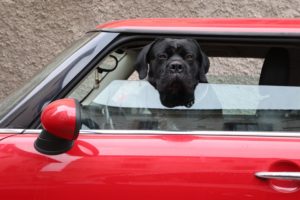
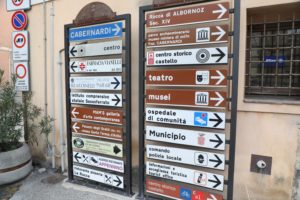

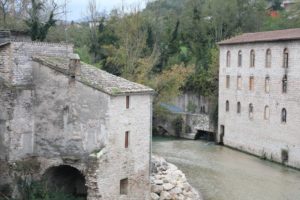

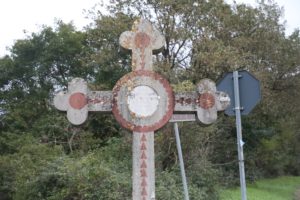

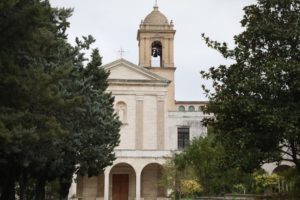


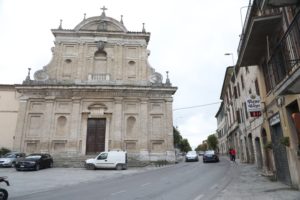
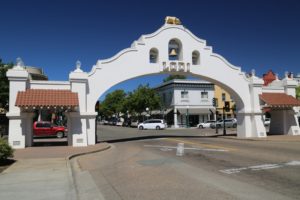
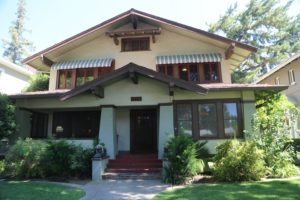
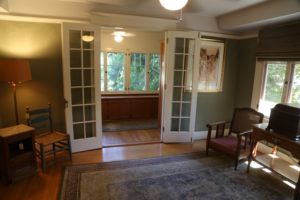
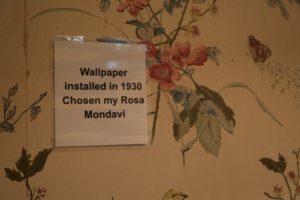
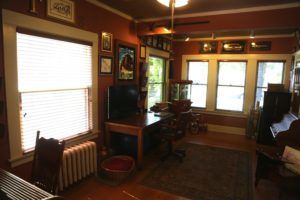
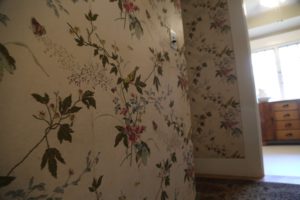
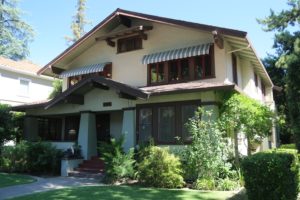
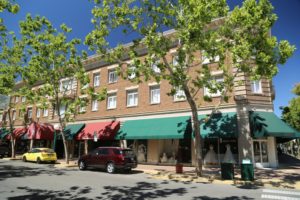
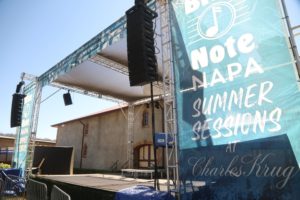
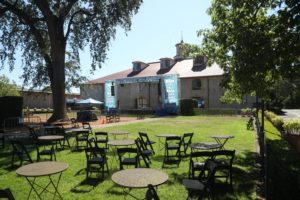
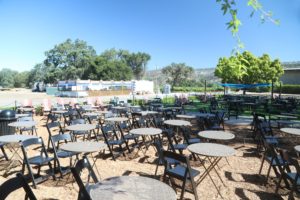
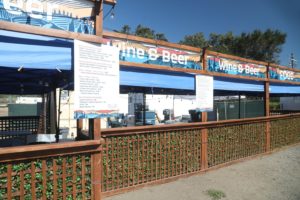

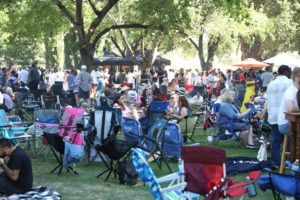
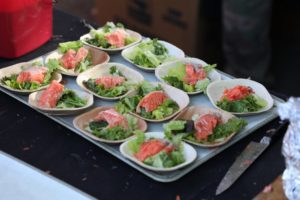

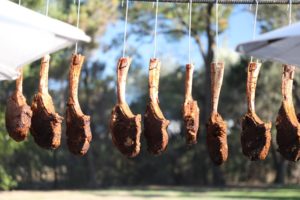
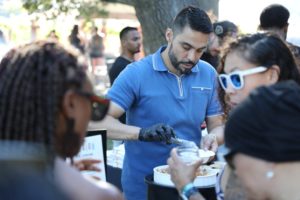
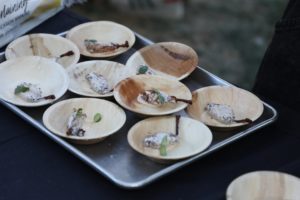
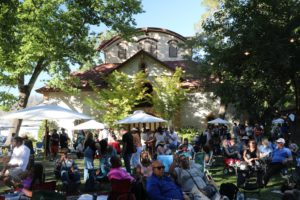
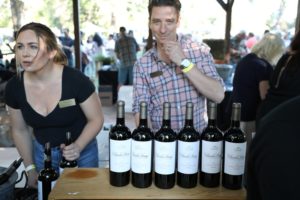
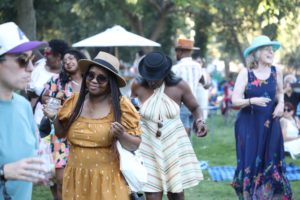
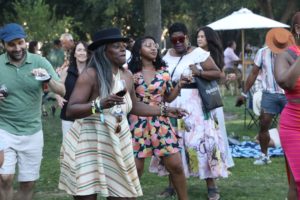
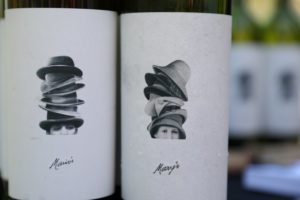
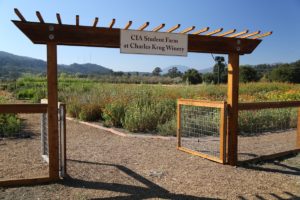
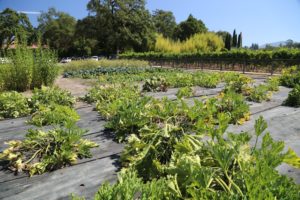
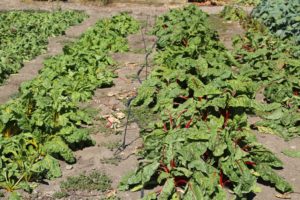
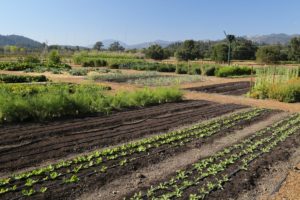
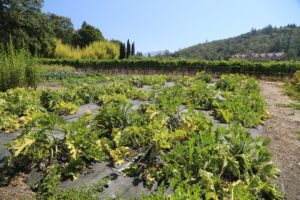
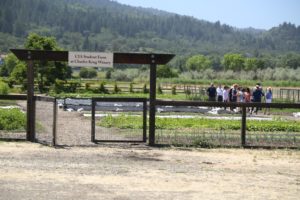
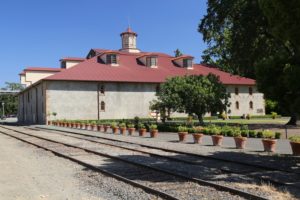

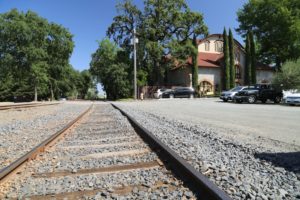
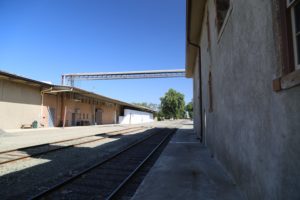


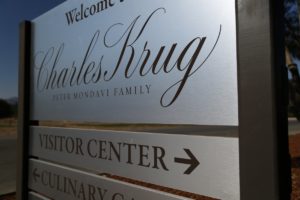


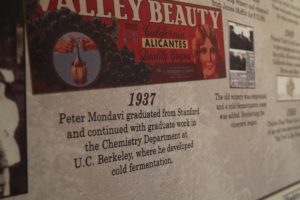
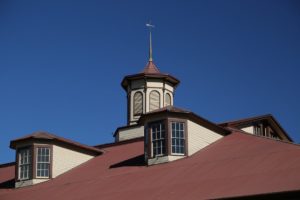

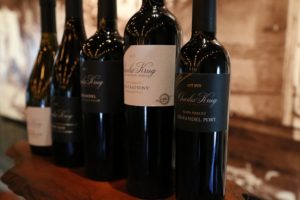
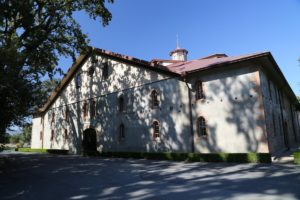
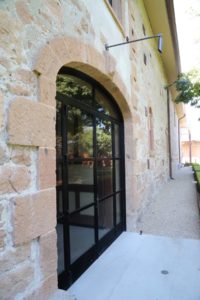
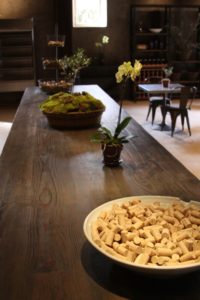

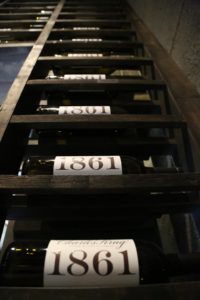
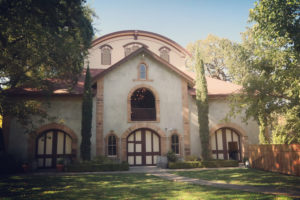
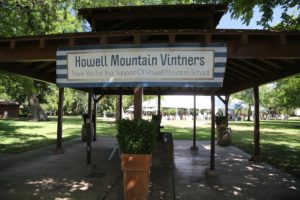
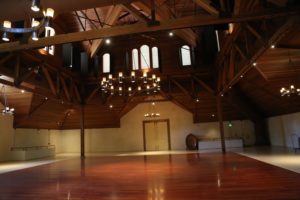
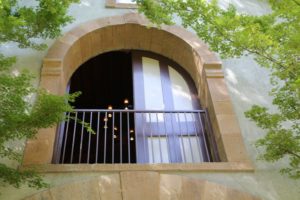
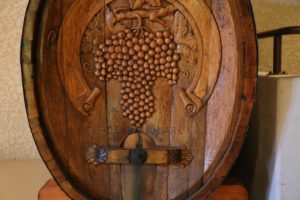
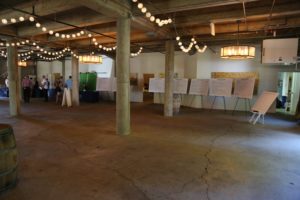
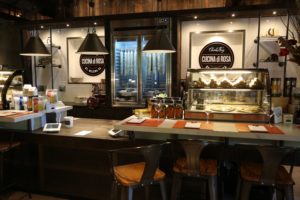
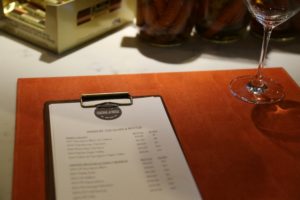
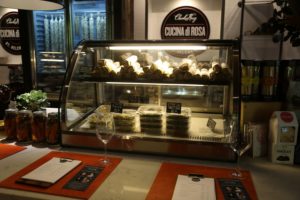

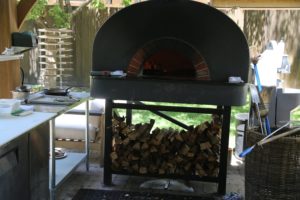


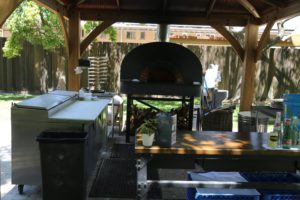
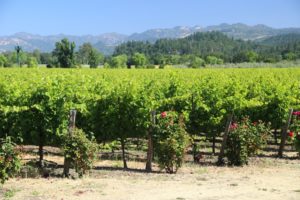

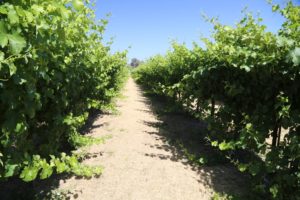
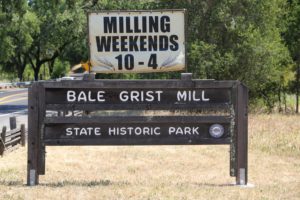
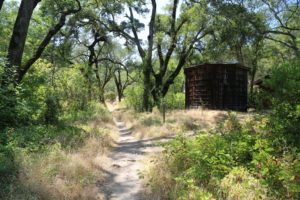
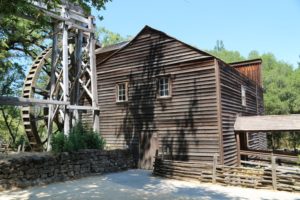
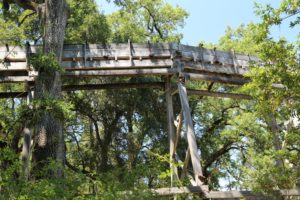
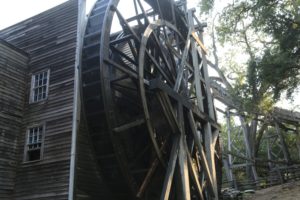
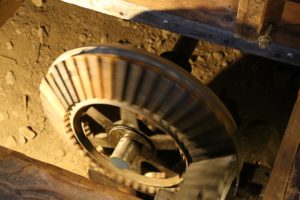

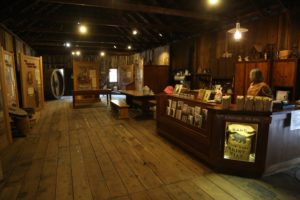
I am looking for where I can purchase the following.
Charles Krug XII Zifandel Port Napa Valley – Limited Release.
Valerie
Valerie – have you tried calling the winery directly?
Louis Stralla is buried in Toquerville Utah.
Hello I was wondering if they sell the wine barrels . I have one that has their logo on it and would love another one . It has Charles Krung and . mondavi family on it .
Christina – I would reach out to the winery directly – you never know, they might have an extra one or two.